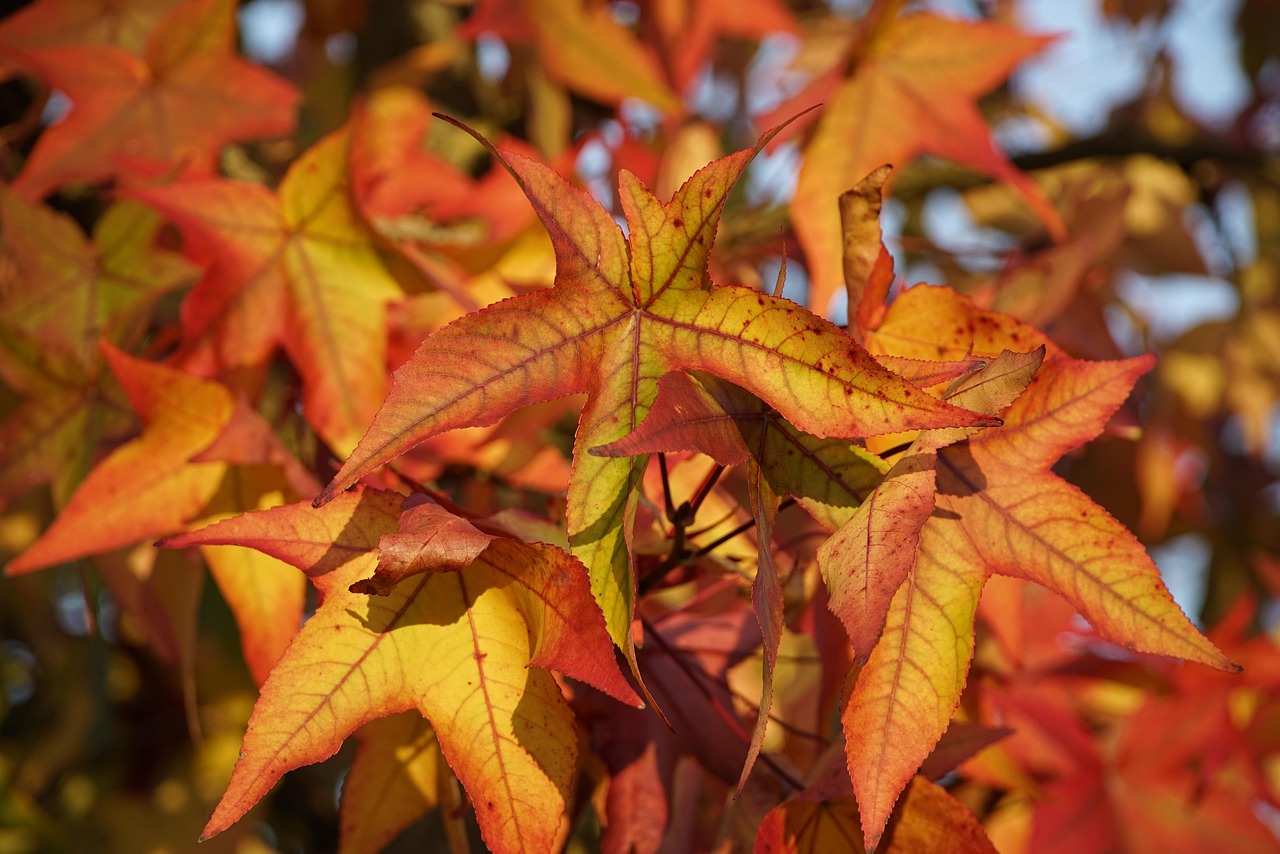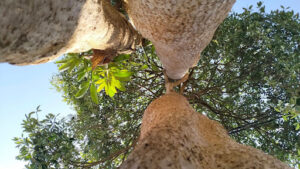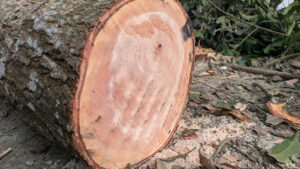What Is a Sweetgum Tree Good For? Benefits, Uses, and Value

- By Henry More
- October 27, 2025
When I first started looking into the Sweetgum tree, I honestly didn’t know what to expect. It’s one of those trees you see around, but you don’t really think about its purpose beyond just being there. This tree, scientifically known as Liquidambar styraciflua, is quite the multitasker. For ages, people have found uses for it, from making chewing gum to building furniture, and even in traditional remedies. It’s not just a pretty face in the landscape; it has a whole lot going on beneath its star-shaped leaves.
What Is a Sweetgum Tree Good For? An Introduction & Key Roles
The Sweetgum tree is a remarkably versatile species, offering a surprising array of benefits that touch upon aesthetics, practical applications, and ecological contributions. It’s a tree that has been valued for centuries, and its importance continues to be recognized today. Whether you’re interested in its ornamental qualities, its potential in wood products, or its role in nature, the Sweetgum has a story to tell.
Here’s a quick look at what makes this tree so useful:
- Ornamental Value: Its distinctive star-shaped leaves and vibrant fall colors make it a popular choice for landscaping. It provides shade and visual interest throughout the year.
- Wood Products: The lumber from Sweetgum trees is used in furniture, cabinetry, and even musical instrument components.
- Medicinal and Chemical Uses: Various parts of the tree, especially its resin, have been historically used for medicinal purposes and contain compounds with potential modern applications.
- Ecological Roles: It provides habitat and food for wildlife and plays a part in improving air and soil quality.
It’s easy to overlook trees like the Sweetgum, assuming they’re just part of the background. However, a closer look reveals a species with a rich history of human use and significant ecological functions. Understanding these roles helps us appreciate the tree’s place in our environment and economy.
As we explore further, we’ll see just how much this tree contributes. It’s a testament to nature’s ingenuity, providing resources and beauty in many forms. Learning about its various applications can really change how you view this common sight in many forests and yards.
What Is a Sweetgum Tree Good For in Landscaping & Aesthetics
When I think about adding trees to my yard, I want something that looks good and doesn’t cause a ton of trouble. The sweetgum tree, or Liquidambar styraciflua, really fits that bill for me. Its star-shaped leaves are a big part of its charm, especially when they turn those amazing colors in the fall. It’s not just about the leaves, though. The tree itself has a nice shape, usually growing tall and somewhat oval, which makes it a great shade provider. I’ve seen them used in all sorts of yards, from big open spaces to smaller areas where they can act as a vertical accent.
There are actually different kinds of sweetgum trees now, too. Some are bred to be really narrow, which is perfect if you don’t have a lot of room side-to-side. Others are known for producing fewer of those spiky seed balls, which can be a relief for some people.
Here’s a quick look at what makes them stand out in a landscape:
- Fall Color: This is probably the biggest draw. The leaves can go through a whole spectrum of reds, oranges, yellows, and purples. It’s like having a living fireworks display in your yard for a few weeks.
- Leaf Shape: Those five-pointed, star-like leaves are pretty unique. They add a different kind of texture and visual interest compared to more common leaf shapes.
- Structure: The tree has a strong central trunk and a good canopy spread, giving it a solid presence in the landscape. It provides shade and a sense of permanence.
- Adaptability: While they prefer certain conditions, sweetgums are generally tough trees. They can handle a range of soil types and are pretty resilient once they get going. I found some information suggesting they do well in various soil conditions.
Some people worry about the seed pods, often called ‘gum balls,’ that these trees drop. They can be a bit pokey underfoot. However, there are ways to manage this, like choosing newer varieties that produce fewer pods or simply mulching them into the lawn in the fall. It’s a small trade-off for the visual benefits, in my opinion.
Overall, I find the sweetgum to be a really rewarding tree for landscaping. It offers a lot of visual appeal throughout the year, especially with its incredible autumn show, and with the right variety, it can be a manageable and beautiful addition to almost any garden.
What Is a Sweetgum Tree Good For as Timber & Wood Products
While many people think of sweetgum trees for their looks or their spiky seed pods, I’ve found they’re actually quite useful when it comes to wood. In the southeastern United States, this tree is a common sight, and its lumber finds its way into a surprising number of products. The heartwood, in particular, has a nice, deep color that makes it suitable for things like furniture, cabinetry, and even speaker boxes. It’s not just about looks, though; the wood’s properties are pretty solid. Research suggests its mechanical strength can even rival that of tulip trees, which means it could be used in general construction, depending on the load requirements.
One thing to note about sweetgum wood is its grain. It tends to be interlocked, which can sometimes lead to warping during the drying process. However, once it’s dried properly, it tends to be quite stable.
Here’s a quick look at some of the wood’s characteristics:
- Grain: Interlocked, which can affect drying.
- Stability: Becomes stable after drying.
- Strength: Comparable to other hardwoods like tulip tree.
- Appearance: Heartwood is dark and rich.
It’s interesting to consider how a tree often seen as a landscape nuisance can actually be a valuable resource for building and crafting. The potential for using this wood in various applications is definitely something to keep in mind.
Beyond furniture, sweetgum wood is also used for pulpwood, contributing to paper production. So, the next time you see a sweetgum, remember it’s not just a tree; it’s a source of material that goes into many everyday items. If you’re interested in different types of wood for projects, you might want to look into black cherry sunflowers for garden inspiration, though they are not wood products themselves.
What Is a Sweetgum Tree Good For in Medicinal & Chemical Uses
When I started looking into the sweetgum tree, I was surprised to find out just how much it’s been used for medicinal and chemical purposes over the years. It turns out this tree is more than just a pretty face with those star-shaped leaves. For a long time, people have been tapping into its sap, known as storax, for various remedies. Historically, indigenous peoples and early settlers in places like Appalachia used parts of the tree, like twigs soaked in water or brandy, for dental hygiene.
More recently, scientific research has started to back up some of these traditional uses. The sap has shown promise as a strong antimicrobial agent, even against bacteria that are resistant to common antibiotics. It’s also being looked at for its antioxidant and anti-inflammatory properties.
Here are some of the key medicinal and chemical applications I found:
- Antimicrobial Properties: The storax resin from the sap has demonstrated effectiveness against various bacteria, including some tough ones like MRSA.
- Antiviral Potential: Compounds found in the leaves and bark, particularly shikimic acid, are precursors to antiviral drugs like Tamiflu. This is a pretty significant connection.
- Wound Healing: Extracts from the sap have been observed to help speed up the healing process for wounds.
- Other Potential Uses: Research also suggests benefits for skin issues, coughs, and even potential applications in managing hypertension and epilepsy, though more studies are needed.
It’s fascinating to see how ancient knowledge about the sweetgum tree is being explored with modern science. The tree’s sap, leaves, and bark contain a variety of compounds that are being investigated for their therapeutic potential. This suggests that the sweetgum could be a valuable source for developing new medicines and treatments in the future.
Beyond direct human medicine, extracts from the sweetgum tree are also being studied for their use as environmentally friendly pesticides and antifungal agents. This broad range of applications, from treating ailments to protecting crops, really highlights the multifaceted value of this tree. I’m particularly interested in the ongoing research into shikimic acid and its role in antiviral drug development.
What Is a Sweetgum Tree Good For in Ecological & Wildlife Roles

When I think about sweetgum trees, I don’t always consider their role in the wider environment, but they actually do quite a bit for local ecosystems. For starters, those spiky little balls, often seen as a nuisance on sidewalks, are a food source. Birds and small mammals can find sustenance in the seeds contained within them. It’s a simple, yet important, connection in the food web.
Beyond just food, the tree itself provides shelter. Its branches and dense foliage offer a place for birds to nest and for various insects to find refuge. This makes the sweetgum a sort of apartment building for the local fauna.
The tree’s sap also has some interesting properties, including insect-repelling qualities, which can indirectly benefit other plants and animals by deterring certain pests.
Here’s a quick look at what sweetgums offer wildlife:
- Food Source: Seeds from the characteristic ‘gum balls’ feed birds and small mammals.
- Habitat: Provides nesting sites and shelter for birds and insects.
- Pollinator Support: While not a primary nectar source, the tree can offer pollen and a place for pollinators to rest.
It’s easy to overlook the ecological contributions of a tree when we’re more focused on its appearance or the mess it might make. However, the sweetgum plays a quiet but significant part in supporting the biodiversity of its surroundings. It’s a reminder that even common trees have a purpose beyond our immediate needs.
Interestingly, sweetgum trees can also be a competitive species in forests, sometimes growing alongside commercially valuable pines. While this can present challenges for timber operations, it also means they are a readily available resource for biomass and other uses, as noted in research on forest management.
Their root systems are also quite fibrous, which helps with soil stabilization, particularly on slopes. This means they can play a role in preventing erosion, further contributing to a healthy local environment.
What Is a Sweetgum Tree Good For in Resin, Gum & Traditional Uses

I’ve always been fascinated by how people have used natural resources for centuries, and the sweetgum tree is a prime example. Long before modern medicine or synthetic materials, folks were tapping into this tree for all sorts of things. The sticky sap that oozes out when the bark is nicked, often called storax, has a history that goes way back.
For ages, this gum was a go-to for chewing gum, but its uses didn’t stop there. It was also recognized for its medicinal qualities. Think of it as an early form of natural remedy. People would use it for skin issues, to help with coughs, and even for stomach troubles. It’s pretty amazing to think about how much knowledge was passed down through generations about these trees.
Here’s a quick look at some of the traditional and more recent discoveries related to sweetgum sap and other parts:
- Chewing Gum Base: The resin was historically processed and used as a base for chewing gum.
- Wound Healing: Native American tribes and others used the sap to help clean and heal wounds.
- Respiratory Aid: It was sometimes used to help clear congestion in the lungs and sinuses.
- Antimicrobial Properties: Modern research has shown that the sap has strong antimicrobial effects, even against bacteria that are resistant to common antibiotics.
- Antifungal Agent: The sap also shows promise as a natural antifungal, useful for both human health and protecting plants.
It’s quite remarkable that compounds found in the sweetgum tree, like shikimic acid in the leaves and immature fruit, are precursors to important antiviral drugs. This connection between traditional knowledge and modern science is a recurring theme when I look into plants like this.
Beyond the sap, other parts of the tree have also been explored. The seeds, for instance, have compounds that researchers are looking into for their potential to help with conditions like epilepsy. It really shows that this tree is more than just a pretty face in the landscape; it’s a complex natural resource with a deep history of practical application.
What Is a Sweetgum Tree Good For — Limitations & Management Challenges
While I’ve sung the praises of the sweetgum tree quite a bit, it’s only fair that I also talk about the downsides. Because, let’s be honest, no plant is perfect, and the sweetgum has its quirks that can make it a bit of a headache for some homeowners. The most talked-about issue, by far, is those spiky little seed pods. They drop in the fall, and they can be a real pain to deal with. Walking on them barefoot is no fun, and they can make raking the lawn a chore. Some people find them so bothersome that they avoid planting sweetgums altogether.
It’s important to remember that while the sweetgum offers a lot, it also demands a bit of consideration from its caretakers. Understanding its needs and potential challenges upfront can save a lot of frustration down the line.
Beyond the seed pods, sweetgums can also be quite large trees. If you don’t have a lot of space, a standard variety might quickly outgrow its welcome. They can spread widely, and their roots can sometimes be a bit aggressive, potentially causing issues with sidewalks or foundations if planted too close. This is where choosing the right cultivar really matters. Some newer varieties, like the ‘Slender Silhouette,’ are bred to be much narrower, making them a better fit for tighter spots. Others are specifically developed to produce fewer or no seed pods.
Here are a few things to keep in mind:
- Space Requirements: Standard sweetgums can get big, needing anywhere from 30 to 50 feet of space. Always check the mature size of the specific variety you’re considering.
- Seed Pod Management: If you’re sensitive to the spiky fruits, look for ‘low-fruit’ or ‘fruitless’ cultivars. Alternatively, a mulching mower can help break down fallen pods.
- Root System: Be mindful of planting too close to structures. While their roots help with erosion control, they can also be a concern for hardscaping.
- Pest and Disease Susceptibility: While generally hardy, sweetgums can sometimes be prone to certain pests like scale insects or diseases like leaf spot, especially when stressed.
So, while I personally find the sweetgum to be a rewarding tree, I can totally see why it’s not for everyone. It’s all about weighing those beautiful fall colors and ecological benefits against the potential for a prickly situation underfoot.
What Is a Sweetgum Tree Good For in Economic & Cultural Value

When I think about the economic and cultural value of the sweetgum tree, it’s more than just pretty leaves and those spiky seed balls. For a long time, people have found practical uses for this tree, and it’s woven into different traditions. It’s not just a tree; it’s been a resource.
Historically, the resin from the sweetgum, often called storax, was a big deal. It was used in all sorts of ways, from being a component in perfumes to having a role in traditional medicine. In some places, like parts of Appalachia, people would even soak twigs to make rudimentary tooth cleaners. It’s pretty amazing to think about how people adapted and used what nature provided. This kind of resourcefulness is something I find really interesting.
The sweetgum’s contribution extends beyond its immediate uses. Its presence in forests, even when considered a competitor in timber operations, highlights a broader economic potential. Research into using these trees for biomass or extracting valuable compounds shows a forward-thinking approach to natural resources.
Economically, sweetgum lumber is used, especially in the southeastern United States. The heartwood can be quite dark and rich, making it suitable for furniture and cabinetry. While it can be a bit tricky to dry because of its interlocked grain, once it’s stable, it holds up well. Some studies even suggest its mechanical properties are comparable to other hardwoods used in construction. So, it’s not just a backyard tree; it’s part of the building and crafting world.
Here’s a quick look at some of its economic roles:
- Lumber Production: Used for furniture, cabinetry, and doors.
- Biomass Potential: Explored for energy production and biofuels.
- Phytochemical Extraction: Source of compounds for medicinal and industrial applications.
Culturally, the tree has a place too. Native American traditions recognized its uses, and its distinctive star-shaped leaves have made it a popular choice for landscaping, adding visual appeal to yards and parks. It’s a tree that has been appreciated for both its utility and its beauty for generations. I’ve seen how its vibrant fall colors can really transform a landscape, making it a focal point. It’s a tree that has a quiet but significant presence in our lives, from the wood in our homes to its place in traditional Chinese medicine practices.
It’s also worth noting that sweetgum trees are being looked at for more than just traditional uses. The compounds found in the tree, like shikimic acid in the seeds, are precursors for important drugs, including antivirals. This shows a modern economic value that builds on centuries of understanding. It’s a reminder that nature often holds solutions we’re still discovering.
The Sweetgum tree is more than just a pretty sight; it’s quite useful! People have used its wood for furniture and other items, and its sticky sap has even been used in traditional remedies. Discover more about the amazing ways this tree benefits us. Visit our website to learn all about tree services!
Frequently Asked Questions
What makes the Sweetgum tree stand out visually?
I find the Sweetgum tree to be quite striking, especially because of its unique, star-shaped leaves. These leaves offer a beautiful display, changing into vibrant shades of red, orange, and gold during the fall. Its tall, oval shape also makes it a lovely addition to landscapes, providing good shade.
Can the wood from a Sweetgum tree be used for building or furniture?
Yes, the wood from Sweetgum trees is quite useful. In the southeastern United States, it’s often used for making furniture and cabinets. While the wood can warp a bit when it’s first dried, it becomes very stable afterward. Its strength is comparable to other common hardwoods, making it suitable for various uses.
Are there any medicinal benefits associated with the Sweetgum tree?
I’ve learned that the sap, often called storax, from the Sweetgum tree has a long history of medicinal use. It’s been used traditionally for things like clearing the lungs and has antiseptic qualities. Modern research also suggests it might help with wounds and has properties that could fight certain bacteria and viruses.
How does the Sweetgum tree help wildlife and the environment?
I see the Sweetgum tree as a great friend to nature. Birds and squirrels enjoy its seed balls, and the tree itself provides shelter. Furthermore, it plays a role in cleaning the air by absorbing pollutants, and its strong root system helps prevent soil erosion, which is beneficial for the land.
Are the spiky seed pods of the Sweetgum tree a major problem?
I understand that the spiky seed pods, often called ‘gum balls,’ can be a bit of a nuisance when they fall. However, I’ve found that there are ways to manage them. Some newer varieties produce fewer pods, and you can also use a mulching mower to break them down or a stiff rake to gather them easily.
Where is the best place to plant a Sweetgum tree?
When I consider planting a Sweetgum, I look for a spot that gets plenty of sunshine, at least six hours a day. They tend to do best in well-drained soil that isn’t too wet or too dry. Giving the tree enough space to grow, especially the standard varieties, is also important for its health.
